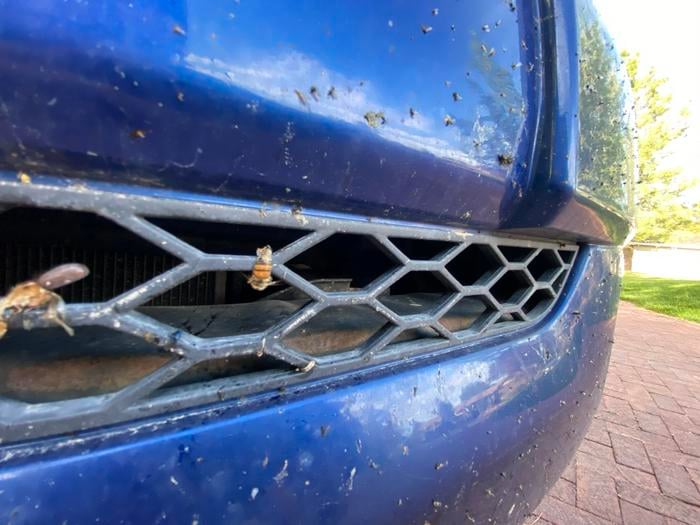Summary: A new study from Utah State University has uncovered the devastating scale of bee deaths caused by vehicle collisions on western U.S. highways. Using innovative research methods, scientists estimate that tens of millions of bees may die each day on roadways, with the highest mortality rates occurring near national parks. The findings raise important questions about how to balance roadside habitat conservation with pollinator protection.
Journal: Sustainable Environment, November 7, 2024, DOI: 10.1080/27658511.2024.2424064 | Reading time: 4 minutes
The Hidden Cost of Highway Travel
While most drivers barely notice when insects hit their windshields, these seemingly minor collisions add up to a major threat to crucial pollinators. New research published in Sustainable Environment reveals an alarming pattern of bee deaths along U.S. highways, particularly in western states.
“Bees play a pivotal role in our ecosystem,” says Joseph Wilson, an evolutionary ecologist at Utah State University. “The consequences of their frequent collisions with vehicles extend well beyond a minor travel inconvenience. In fact, the impacts of bee deaths, occurring minute-by-minute each day, may have a greater negative impact than we realized.”
Measuring the Unmeasurable
Unlike tracking collisions with larger animals, quantifying bee deaths presents unique challenges. The research team developed an innovative approach, using sticky traps attached to car bumpers to collect data, which they then analyzed alongside Department of Transportation statistics.
“Unlike collisions with larger animals that are easy to measure, it is much harder to detect the extent of bee mortality caused by moving vehicles,” Wilson explains. The resulting estimates proved sobering, suggesting tens of millions of bees may perish daily on western U.S. highways.
A Complex Environmental Challenge
The study uncovered an unexpected paradox in roadside ecology. “Roadsides, especially those in arid landscapes, have more flowering plants due to water runoff from roads,” Wilson notes. While these areas can provide valuable bee habitat, they may also create deadly corridors that draw pollinators into harm’s way.
The problem is particularly acute near national parks, where increasing visitor traffic creates steady streams of vehicles through bee-rich environments. This presents a challenging question for environmental managers: how to create bee-friendly habitats without putting these essential pollinators at greater risk?
Looking for Solutions
The research suggests that careful landscape design could help reduce bee deaths while still supporting pollinator populations. “Some studies show healthy roadside habitat facilitates movement of pollinators along the road,” Wilson notes. “So, with some awareness, landscapes can be restored along roadways to support pollinator communities and reduce the need for road crossings.”
The team emphasizes that more research is needed to understand how road design, vehicle design, and habitat management can better protect these essential insects.
Key Terms
- Pollinator: An animal that helps transfer pollen between plants, enabling plant reproduction
- Habitat Fragmentation: The process of breaking up continuous natural environments into smaller, isolated pieces
- Keystone Species: An organism that plays a crucial role in maintaining ecosystem balance
- Arid Landscape: A dry environment with limited rainfall and specific adaptations for water conservation
Test Your Knowledge
- How many bees are estimated to die daily on western U.S. roads?
Answer: Tens of millions
- Where do researchers find the highest bee mortality rates?
Answer: Near national parks
- What method did researchers use to collect data on bee deaths?
Answer: Sticky traps attached to car bumpers
- Why do roadsides often attract bees in arid regions?
Answer: They have more flowering plants due to water runoff from roads
Enjoy this story? Get our newsletter! https://scienceblog.substack.com/
If our reporting has informed or inspired you, please consider making a donation. Every contribution, no matter the size, empowers us to continue delivering accurate, engaging, and trustworthy science and medical news. Independent journalism requires time, effort, and resources—your support ensures we can keep uncovering the stories that matter most to you.
Join us in making knowledge accessible and impactful. Thank you for standing with us!

